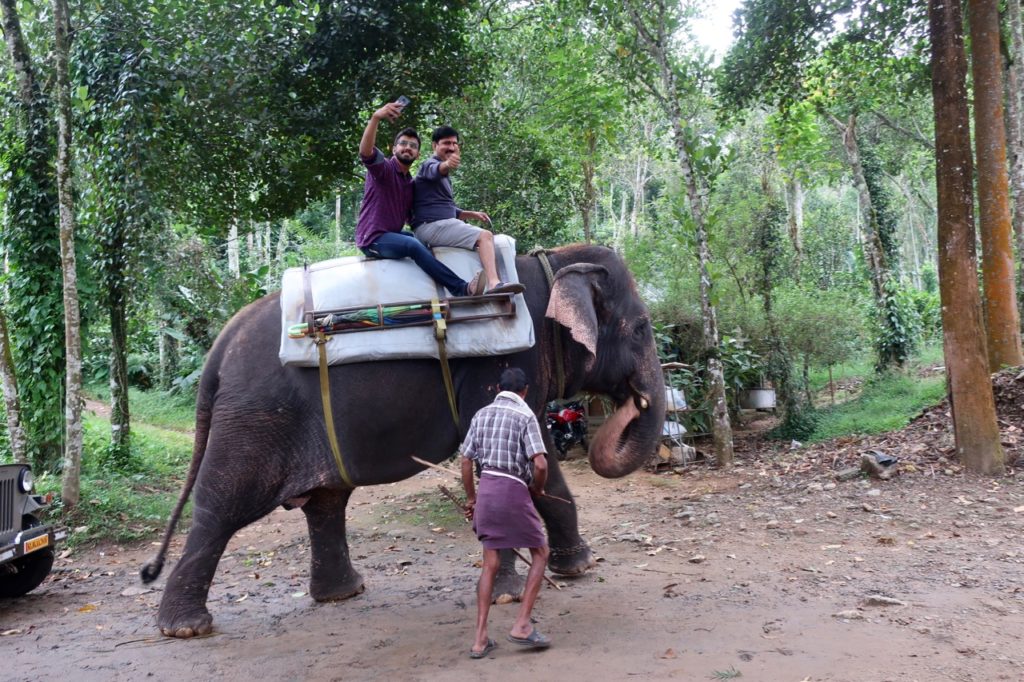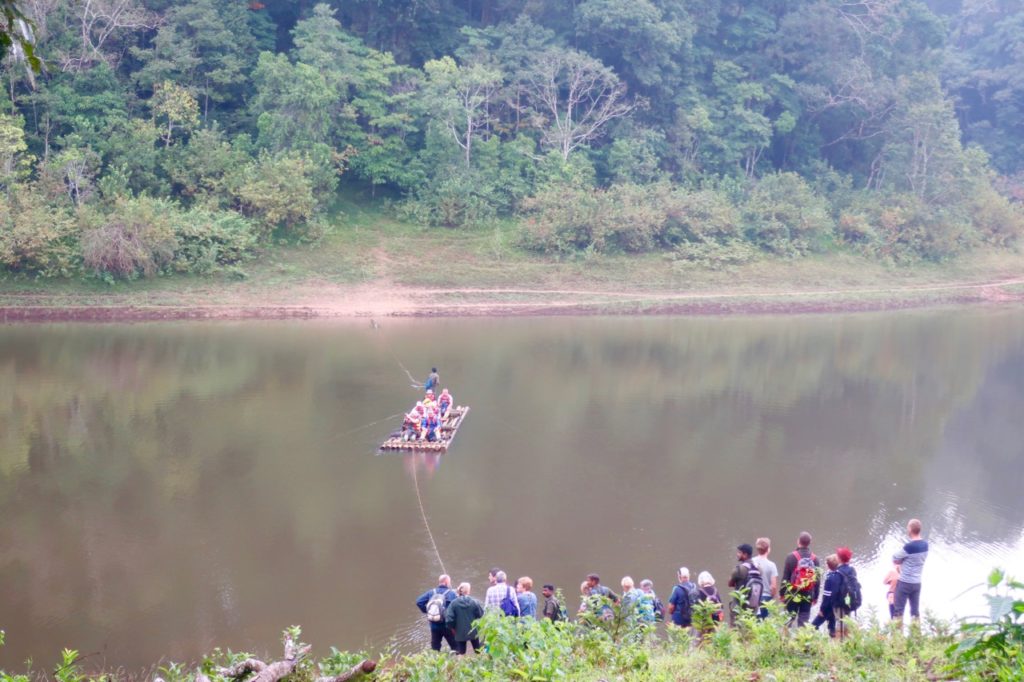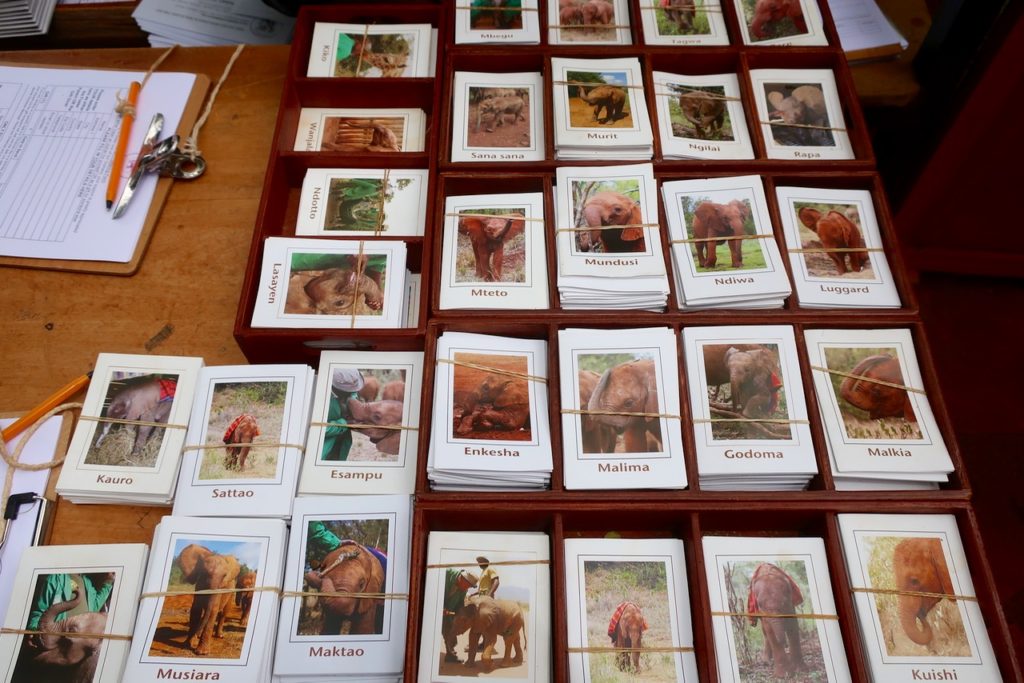If you are traveling to Asia, you are probably very excited at the prospect of seeing, even riding elephants. But do you know that around 75% of the world’s captive elephants have been illegally captured, with over 3,000 used for entertainment in Asia alone?
PETA, whose driving force is that animals are not ours to use for entertainment is highlighting that elephants used for rides are often forcibly separated from their mothers as babies. They are then immobilised with tightly bound ropes, and gouged with bullhooks or nail-studded sticks during “training.”

Please do not accept elephant rides!
Many tour companies are pledging not to promote cruel elephant rides, and if you see someone offering an elephant ride, I urge you NOT TO ACCEPT.
There are some other ways in which you can still enjoy seeing elephants sustainably by visiting small sanctuaries and spotting them in the wild.

Crossing the river at Periyar National Park
Periyar National Park, South India
Periyar National Park in Kerala is one of the most well-preserved natural habitats I have visited. Here you can see the Indian Elephant, a subspecies of the native Asian elephant, in the wild. Take a walking safari at sunrise or sunset and you will most likely spot the elephants hanging out near the river.
The Elephant Transit Home and Yala National Park, Sri Lanka
Sri Lanka is home to a population of up to 4,000 endangered Sri Lankan elephants. While many travelers opt to visit the Pinnawala Elephant Orphanage, there are some concerns about the treatment of the elephants and ethos of the orphanage.
This is a rehabilitation center for orphaned and injured elephants, with a strict no-contact policy. Visitors here can observe the elephants in a natural atmosphere and see how they interact with one another during feeding time
Pranburi, Thailand
There’s chance to get off the beaten track in Thailand and discover the Wildlife Friends Foundation – an organization rescuing and rehabilitating sick or injured elephants.
Chiang Mai, Thailand
The Elephant Nature Park is located in Northern Thailand outside of Chiang Mai. This park is dedicated to caring for elephants who have endured mistreatment in camps and circuses with more than 35 elephants currently cared for.
Minneriya or Kaudulla National Park, Sri Lanka
Visits to the Minneryiya or Kaudulla National Park gives travelers the opportunity to climb the Sigiriya Rock Fortress, before taking an elephant safari. A jeep Safari in Minneriya or Kaudulla National Park with Rickshaw Travel comes as part of the Elephant‘s in Buddha’s Garden trip.

Adopt an elephant at Sheldrick’s Elephant Orphanage
Sheldrick’s Elephant Orphanage, Kenya
Watch baby elephants rescued from all over Kenya at Sheldrick’s Elephant Orphanage as they are fed every morning from 10-11am. There is no physical contact with the elephants though they may come close to you on their own during playtime.
For a $50 annual donation, you can even also foster a baby elephant and receive newsletters with rescue stories.
World Elephant Day
The annual World Elephant Day (12 August) is dedicated to the preservation and protection of the world’s elephants, as many fight to change this fate.
There are two species of elephants: African comprised of two different species (forest and savannah), with less than 400,000 remaining worldwide, and Asian, with less than 40,000 remaining worldwide.
While they are similar in physiology, they are too biologically different to interbreed. Recent scientific findings suggest that the forest-dwelling African elephant is a genetically distinct species, making it a third elephant species. (Courtesy Rickshaw Travel in Travel Alliance Bulletin)